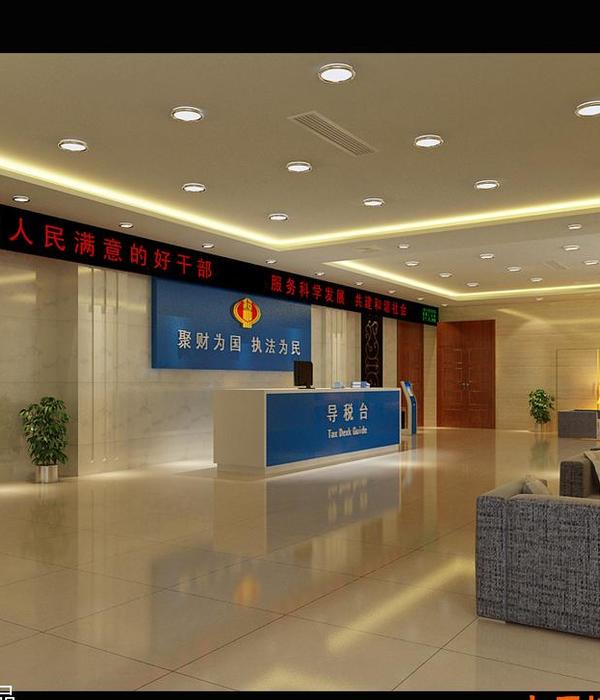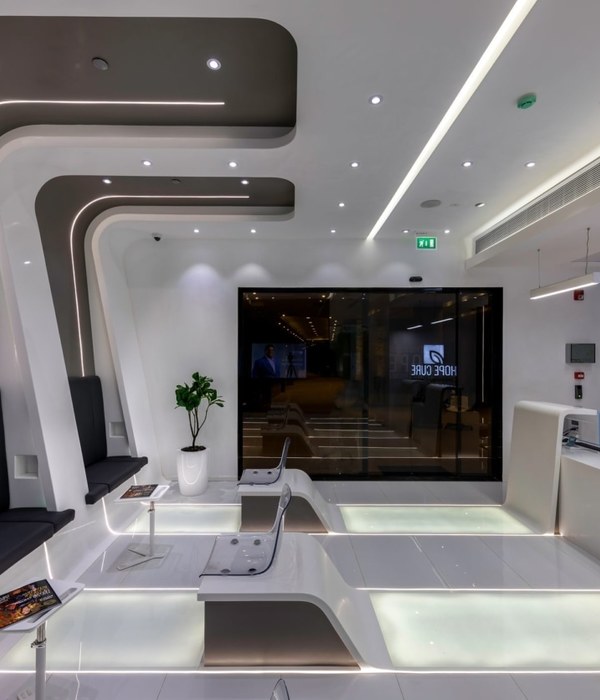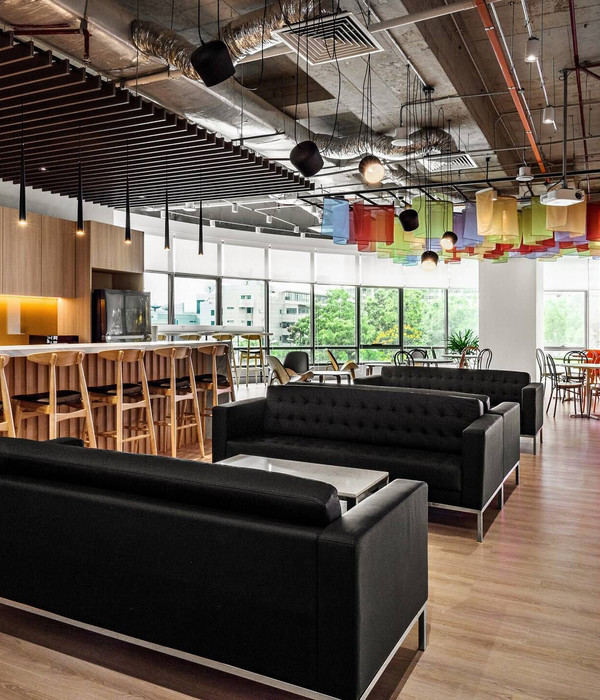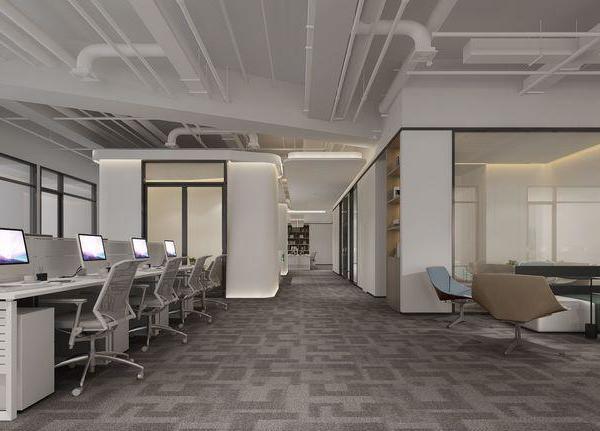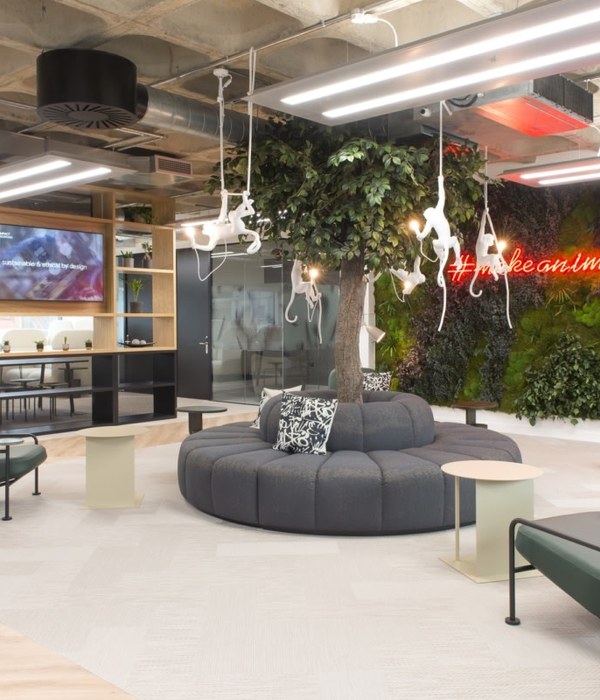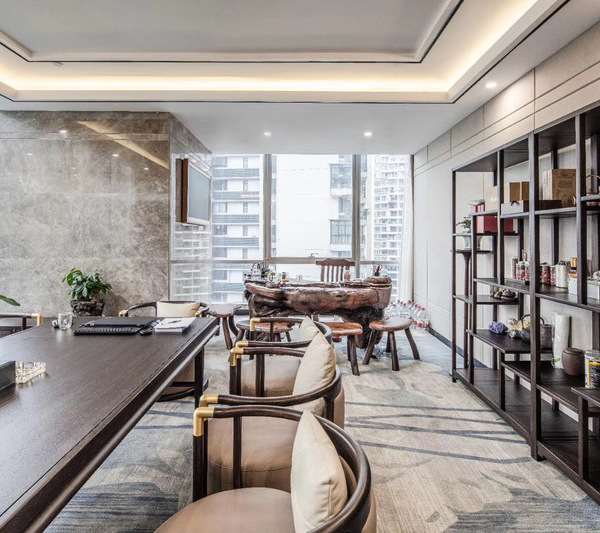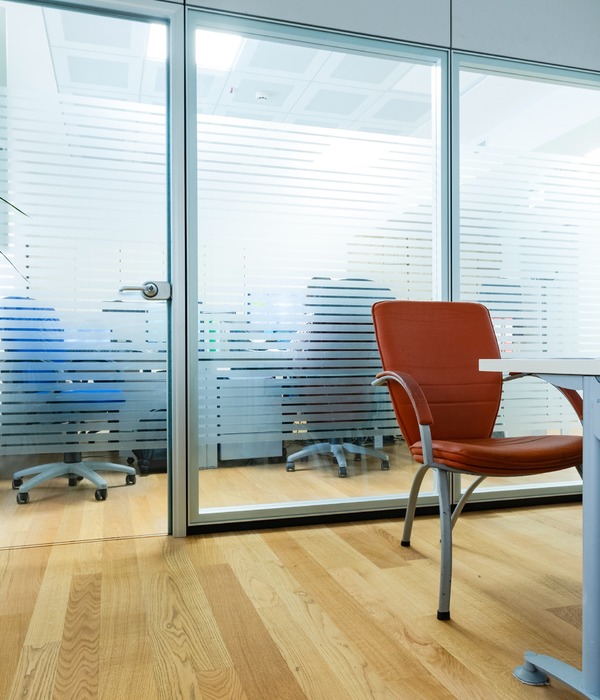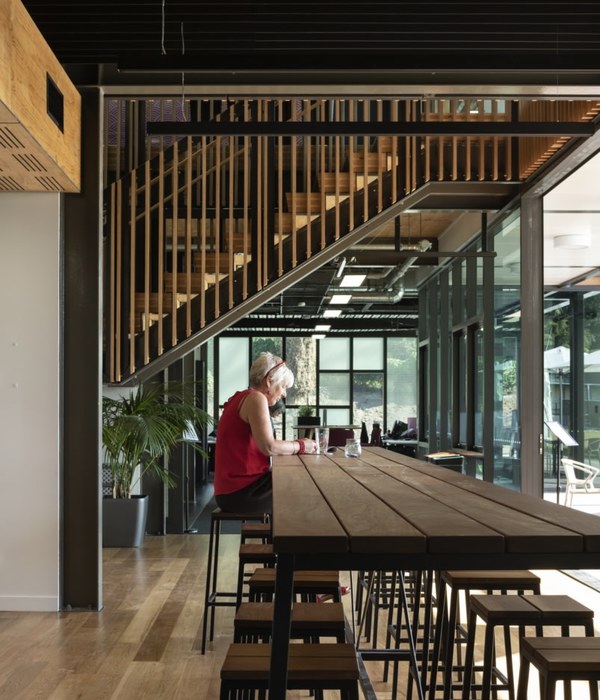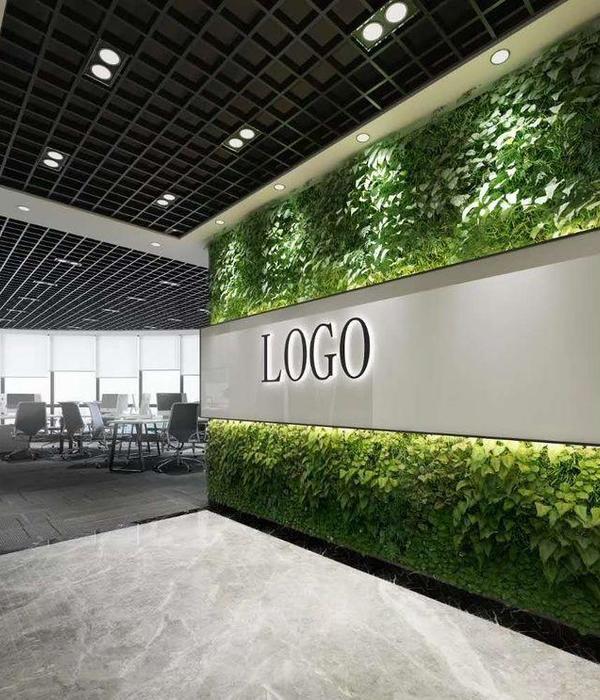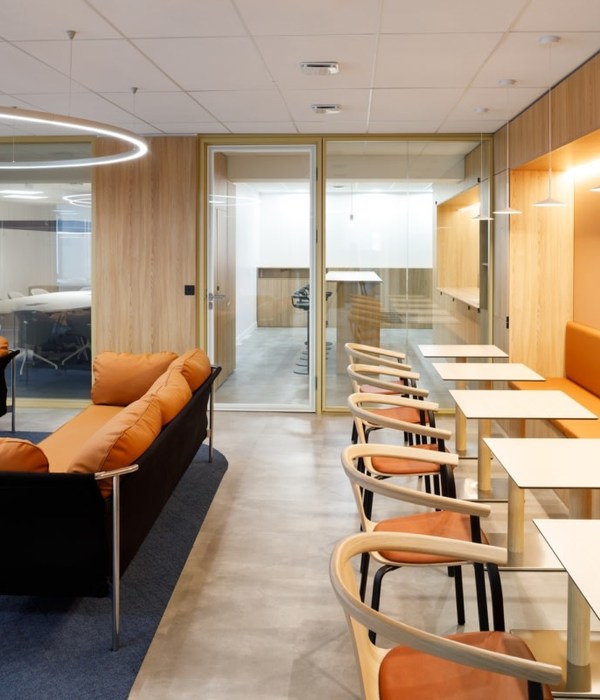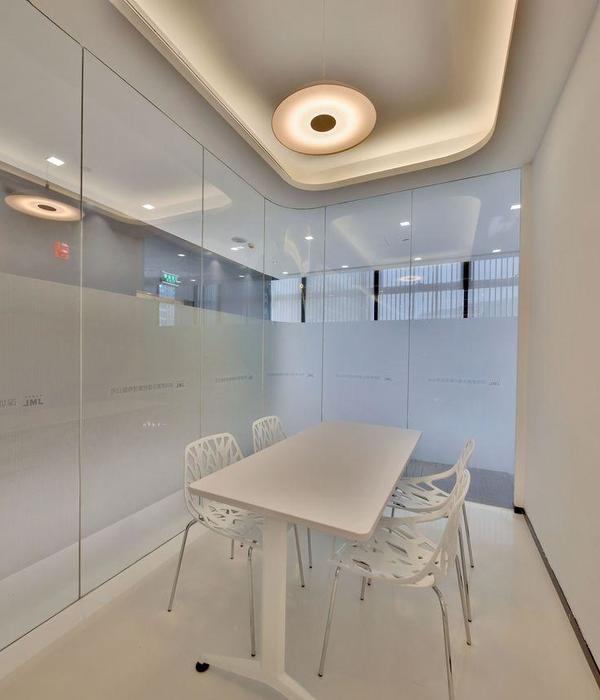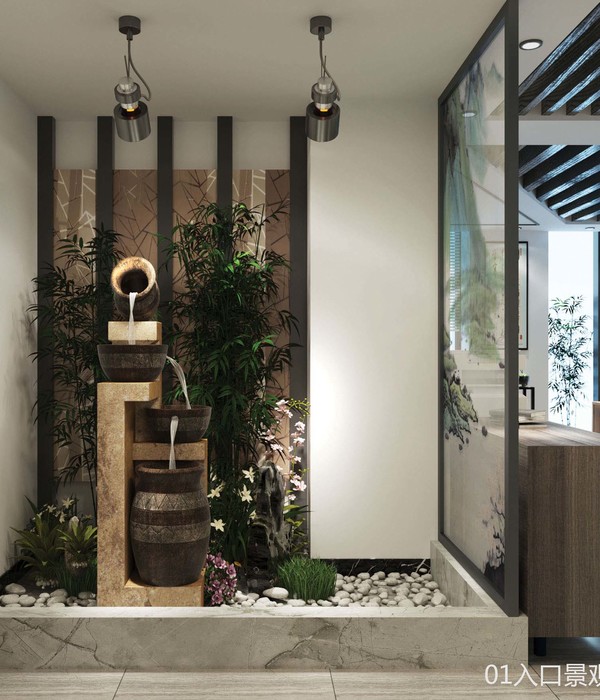SPINN Arkitekter (挪威) 和 FORMAT Engineers (英国)合作设计并建造了位于北极圈内一座令人惊叹的徒步旅行小屋。2015年夏天,挪威徒步协会(DNT)Hammerfest分会决定建造两座简单而温暖的小屋,作为促进城镇周边山区徒步旅行的设施。项目要求很简单:“我们想要一座带有窗户的徒步旅行小屋,内部有燃烧木材的壁炉和简单的长椅,小屋设置在山顶附近并且需要适宜所处的地形。”
SPINN Arkitekter (NO) and FORMAT Engineers (UK) have collaborated on the design and realisation of a stunning new mountain hiking cabin above the arctic circle. In the summer of 2015 the Hammerfest chapter of The Norwegian Trekking Association (DNT) decided to build two simple warming huts to promote hiking in the mountains around town. The brief was simple – “we imagine a small hiking cabin with good windows that has a wood burning stove and simple benches, placed near the top of the mountain and designed such that it suits the terrain”.
▼山顶上与地形相结合的小屋,the cabinet is on the top of the mountain and suits the terrain ©Tor Even Mathisen
▼小屋一侧拥有朝向景观的大窗户,windows on one side of the cabinet has a great view towards landscape ©Tor Even Mathisen
▼室内配备有壁炉和家具,fireplace and interior furniture are installed in the warming space ©Tor Even Mathisen
SPINN在2015年夏天接受这一任务并完成了草图设计。“Varden”是一个适宜于所处地形的有机木材小屋,能够适应极地冬季严寒的气候条件,为徒步旅行者提供一个温暖而诱人的休息站,并且小屋本身也成了地区的一个景点。为了能够将有机木材小屋的草图设计转换为现实,SPINN联系了他们长期合作伙伴FORMAT Engineers,在他们的帮助下将双曲线的木制“岩石”转变成实际的建筑物,让当地的志愿者团队能够按照图纸精确的在山顶建造出来。
▼双曲线外壳研究,study of the double-curved wooden shell ©SPINN
设计团队利用无人机和摄影测量软件绘制出场地详细的3D地形图,并将其作为建筑外形设计的基准。建筑师使用Sketchup和Rhino绘制初始设计,然后由FORMAT工程师使用Kangaroo、Grasshopper和根据设计开发的脚本工具,进一步进行优化和转换。最终方案呈现为一个交叉层压木板外壳,由77块独特面板像三维拼图一样装配在一起。
The sites were mapped in 3D using a drone and photogrammetry software to give a detailed map of the surface which was used as a baseline for form-finding. The initial shapes made by the architects in Sketchup and Rhino were further optimized and transformed by the engineers using Kangaroo and Grasshopper, together with some customized scripting tools developed by FORMAT. The result was a wooden cross-laminated timber shell with 77 unique panels that fit together like a 3D puzzle.
▼小屋外观是77块像三维拼图装配在一起的木板,the exterior was a wooden cross-laminated timber shell with 77 unique panels that fit together like a 3D puzzle ©SPINN
设计在模拟风力条件下进行测试,确保小屋能够承受冬季极地风暴和极端的风力环境。雪地模拟测试确保入口不受积雪阻挡。根据面板之间的结构力确定结构所使用的螺钉和加固构件的正确类型。3D打印用来测试结构如何能够组装在一起以及测试外部覆盖层的不同选择。SPINN 与 FORMAT 的设计与业主的期待完全不同,并且预算更高,但他们决定设法建成项目。团队制作了视觉设计产品和动画为项目众筹集资宣传。当地企业志愿提供材料和服务,Kebony捐赠了外部覆盖层的材料。按照计划,徒步协会负责将材料运输到山顶场地。
The design was tested against simulated wind conditions to make sure that it would withstand winter arctic storms and extreme wind conditions. Snow simulations were performed to ensure that the entrance will remain snow-free as intended. Structural forces between the panels were determined to specify the correct type of screws and fasteners for the construction. 3D printing was used extensively to test out how the construction would fit together, and to test cladding options for the exterior.The design proposed by SPINN and FORMAT was something very different than the client expected, and had a higher budget, but they were determined to find a way to get the project built. A visualisation and animation were made as part of a crowdfunding effort to raise the money necessary to realize the project. Local businesses volunteered materials and services, and Kebony donated materials for the exterior cladding. According to the plan, the hiking association members would be responsible for raising the structure and transporting it to site.
▼外部覆盖层利用不同的螺丝和加固构件,the exterior shell used different type of screws and fasteners for the construction ©SPINN
最后,建筑物在一个环境可控的仓库中建造,团队在这里进行小屋构件组装和测试,然后再分成不同部分进行运输。一组充满热情的志愿者负责主体结构,花费了4天的时间将预制CLT面板组装在一起。另一组志愿者根据SPINN绘制的1:1图纸切割和测量框架及外部覆盖层的面板。志愿者耗时1500多小时建造了一座小屋外加两个小屋覆盖层。项目唯一的专业工作是外壳的双层的沥青防水层和现场浇筑的地基。第一座小屋分成两部分,通过一辆开往Storfjellet的平板卡车运输到场地,然后将小屋抬高到合适的位置后吊装在一起。窗户、壁炉、坡道和内部家具都已安装到位。
▼装配步骤,assembly stages ©SPINN
▼平台及外壳装配图示,assembly cladding&terrace ©SPINN
▼外部面板装配图示,assembly cladding panel ©SPINN
In the end it was decided to build the structure in a controlled warehouse environment, where it would be put together and tested, then partially demounted for transport. One group of enthusiastic volunteers got the main structure of prefabricated CLT panels mounted together over a period of 4 workdays. Another group was responsible for cutting and measuring the frames and panels for the outer cladding based upon 1:1 drawings from SPINN.The volunteers used over 1500 hours on the construction of one cabin, plus the outer cladding for both. The only professional work on the project was the two-layer bitumen waterproofing of the shell, and pouring of the foundation on site. Split into two pieces, the first cabin was loaded onto a flat bed lorry and driven to Storfjellet. It was then lifted into place and winched together. The window, fireplace, ramp and interior furniture were all fitted into place on site.
▼小屋组装和装配,the assembly of the cabinet ©DNT Hammerfest
现在第一座小屋已经取得了巨大的成功,截止到目前为止已经大大增加了Storfjellet的旅行人数。第二座小木屋将建造在Hammerfest 另一侧的Tyven山上,这样两座小木屋既能够俯瞰城市,又能够在Hammerfest美丽的极地风光中相互对望。
▼夕阳景色中的小屋,cabinet in a sunset view ©Tor Even Mathisen
▼温暖的室内,warm interior ©Tor Even Mathisen
Thus far the first cabin has been a great success, and has increased the traffic to Storfjellet significantly so far. The second cabin will be built on Tyven, a mountain on the other side of Hammerfest such that the two cabins will stand watch over the city and look over to each other across the beautiful arctic landscape of Hammerfest.
▼小屋极光景色,cabinet with polar lights ©Tor Even Mathisen
▼外壳图解模型,shell sequence ©SPINN
Project Facts:
Client: Hammerfest og Omegn Turlag – https://hammerfest.dnt.no/dagsturhyttene/
Place: Storfjellet and Tyven in Hammerfest, Norway
Time: Storfjellet completed 2018, Tyven to be built in 2019
Area: 15 m2
Budget: 100,000 EUR per cabin (includes a great deal of volunteer hours for construction)
{{item.text_origin}}

